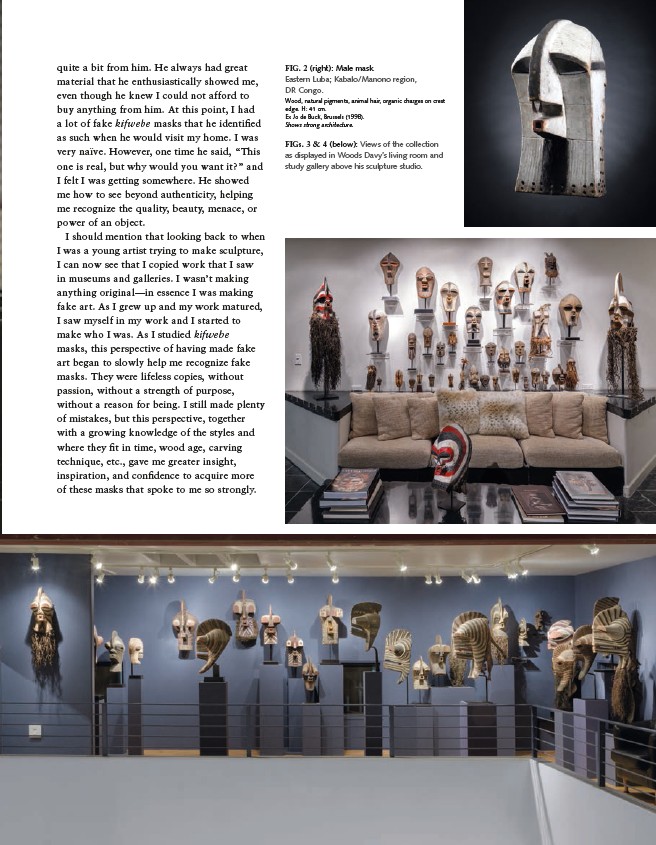
107
quite a bit from him. He always had great
material that he enthusiastically showed me,
even though he knew I could not afford to
buy anything from him. At this point, I had
a lot of fake kifwebe masks that he identified
as such when he would visit my home. I was
very naïve. However, one time he said, “This
one is real, but why would you want it?” and
I felt I was getting somewhere. He showed
me how to see beyond authenticity, helping
me recognize the quality, beauty, menace, or
power of an object.
I should mention that looking back to when
I was a young artist trying to make sculpture,
I can now see that I copied work that I saw
in museums and galleries. I wasn’t making
anything original—in essence I was making
fake art. As I grew up and my work matured,
I saw myself in my work and I started to
make who I was. As I studied kifwebe
masks, this perspective of having made fake
art began to slowly help me recognize fake
masks. They were lifeless copies, without
passion, without a strength of purpose,
without a reason for being. I still made plenty
of mistakes, but this perspective, together
with a growing knowledge of the styles and
where they fit in time, wood age, carving
technique, etc., gave me greater insight,
inspiration, and confidence to acquire more
of these masks that spoke to me so strongly.
FIG. 2 (right): Male mask.
Eastern Luba; Kabalo/Manono region,
DR Congo.
Wood, natural pigments, animal hair, organic charges on crest
edge. H: 41 cm.
Ex Jo de Buck, Brussels (1998).
Shows strong architecture.
FIGs. 3 & 4 (below): Views of the collection
as displayed in Woods Davy’s living room and
study gallery above his sculpture studio.